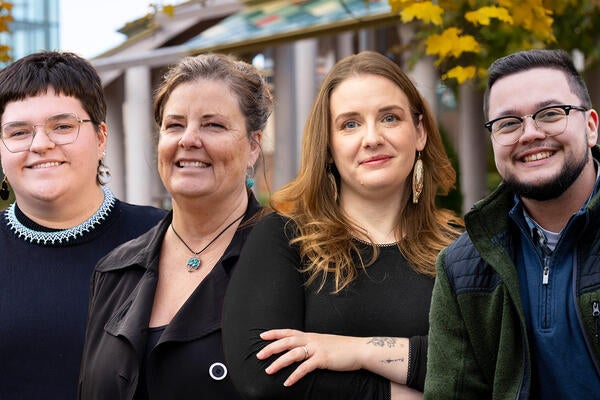
Domestic violence: Does video evidence in court harm victims?
Photographs of injuries and videotaped testimony can actually re-victimize women in court, says Waterloo legal studies professor

Photographs of injuries and videotaped testimony can actually re-victimize women in court, says Waterloo legal studies professor
By Wendy Philpott Faculty of Arts
Rashmee Singh
When it comes to prosecuting domestic violence cases in court, it turns out that photographs of injuries after the assault and videotaped testimony can potentially victimize women further, says a University of Waterloo expert in domestic violence.
It was thought that visual evidence would help bring perpetrators to justice, however, in a significant number of cases, visual evidence is often used against victims in court, says Rashmee Singh, a professor in Waterloo’s Department of Sociology and Legal Studies.
The problem, she explains, is that the photographs and videos take on a persona of their own; these images become a “data-double” that can actually trump a victim’s in-person testimony.
While the visual evidence is often key for prosecutors, the cases tend to proceed to the exclusion of the real victim. “Her visual doppelganger is relied on instead of the victim herself to tell an incontrovertible story of abuse,” says Singh. “The digital representations are treated as more truthful than the human victim.”
Domestic violence cases in the criminal justice system can be contentious for a many reasons, and consequently about 95% of victims resist the process, often choosing to retract their original accusation.
“People have legitimate reasons for choosing not to proceed with charges in a criminal court. While all victims want the violence to stop, they do not necessarily want their partners to be charged and convicted. The use of visual evidence within the context of mandatory prosecution strategies ultimately deprives complainants of the ability to make their own decisions about their cases,” says Singh. Ironically, the visual recordings of complainants taken in the aftermath of an assault end up working against them if they recant.
As a co-investigator on a Social Sciences and Humanities Research Council (SSHRC) project with Professor Dawn Moore of Carleton University, Singh wants to more fully understand the construction and effects of visual evidence in domestic violence cases. Part of the research objectives are to uncover how the criminal justice system inadvertently contributes to a victim’s negative experience.
For Singh, this research continues years of work dedicated to activism against gender-based violence - from organizing Take Back the Night marches to volunteering as a rape crisis counsellor and helping establish Toronto’s specialized domestic violence courts.
Currently she is part of a University of Waterloo group organizing the on-campus activities to support UN Women’s 16 Days of Activism against Gender-Based Violence Campaign.
“I do hope that one day we can reach a point where campaigns such as this will become obsolete. But until then, we need to continue to challenge complacency and notions that gender equity has been achieved. The prevalence of gender-based violence is one of the most significant indicators that this is not at all the case."
Singh will give a talk on campus on Wednesday, November 25 about her research: Seeing Crime: Law, Visual Evidence and Domestic Violence” for W3 (Waterloo Women’s Wednesdays). Details are on Waterloo’s 16 Days of Activism website.

Read more
Researchers awarded funding to investigate ecology, climate change, repatriation, health and well-being through cultural and historical lens

Read more
Meet five exceptional Waterloo graduate students crossing the convocation stage as Class of 2025 valedictorians

Read more
Waterloo researchers propose solution to help communities escape the costly cycle of flood damage and rebuilding
The University of Waterloo acknowledges that much of our work takes place on the traditional territory of the Neutral, Anishinaabeg, and Haudenosaunee peoples. Our main campus is situated on the Haldimand Tract, the land granted to the Six Nations that includes six miles on each side of the Grand River. Our active work toward reconciliation takes place across our campuses through research, learning, teaching, and community building, and is co-ordinated within the Office of Indigenous Relations.